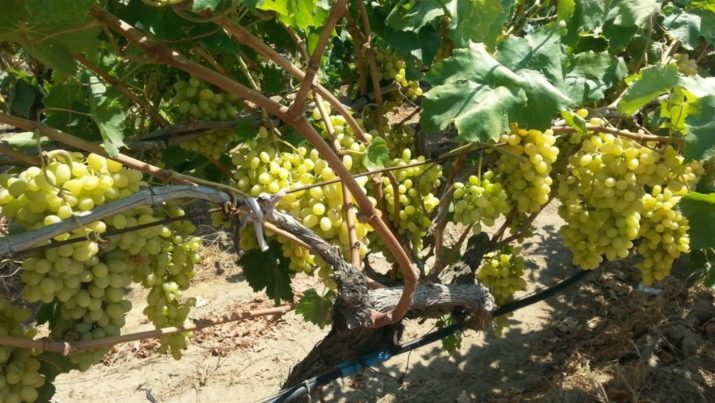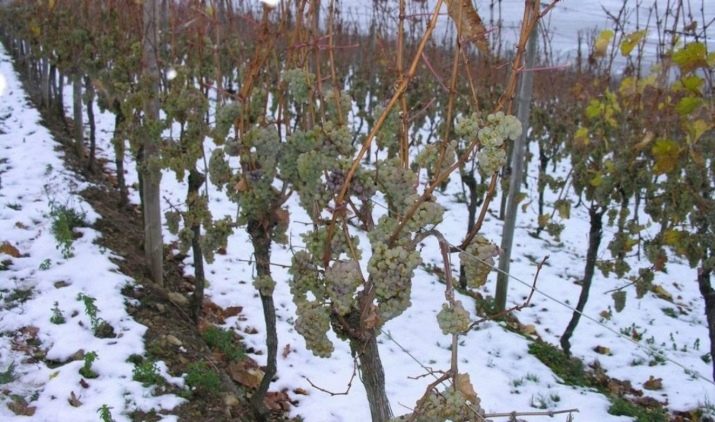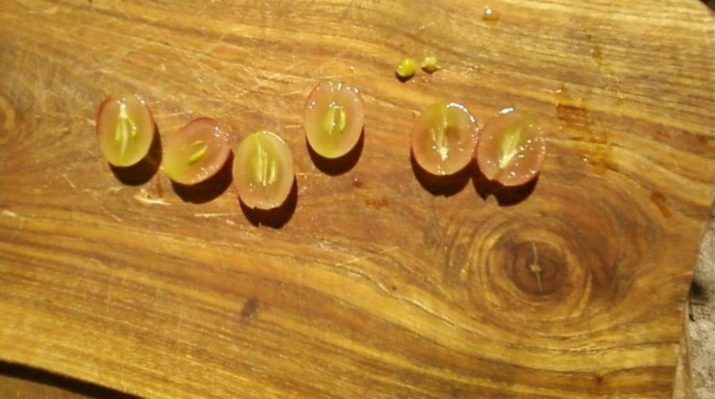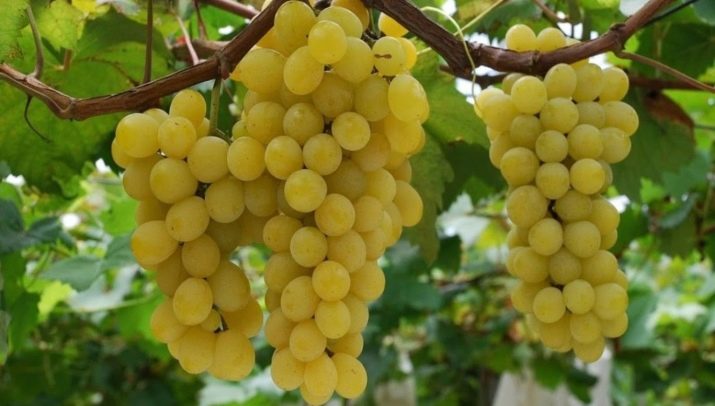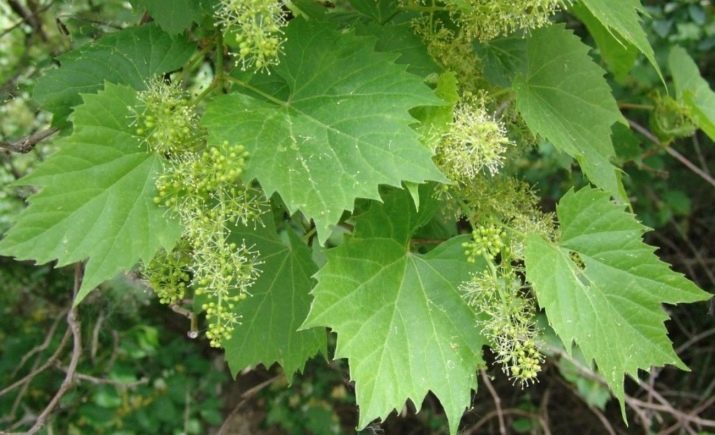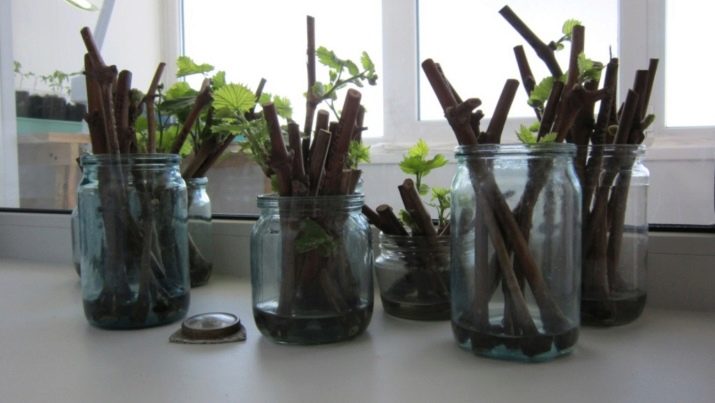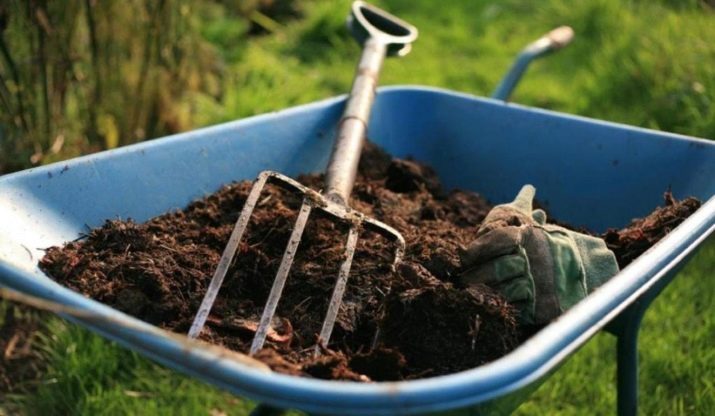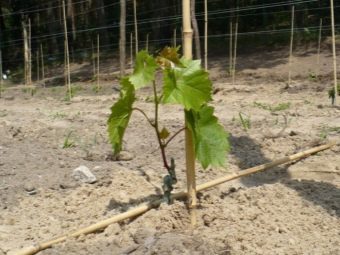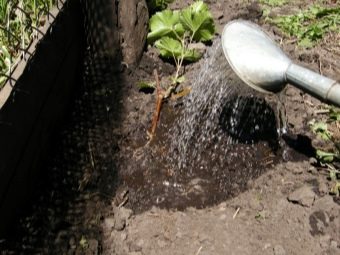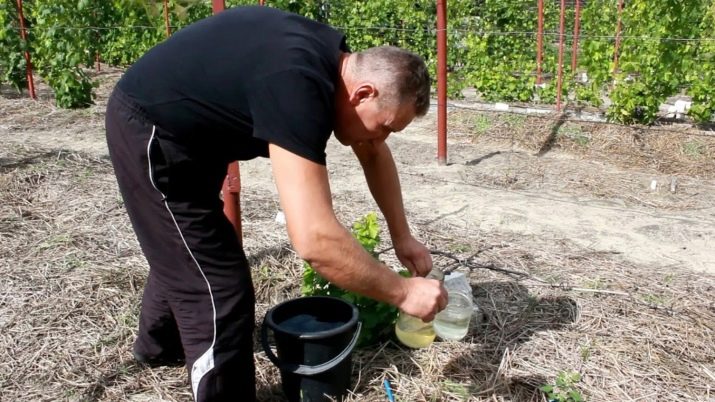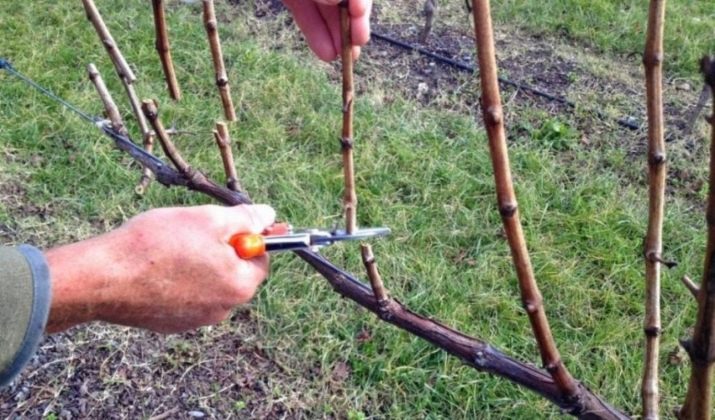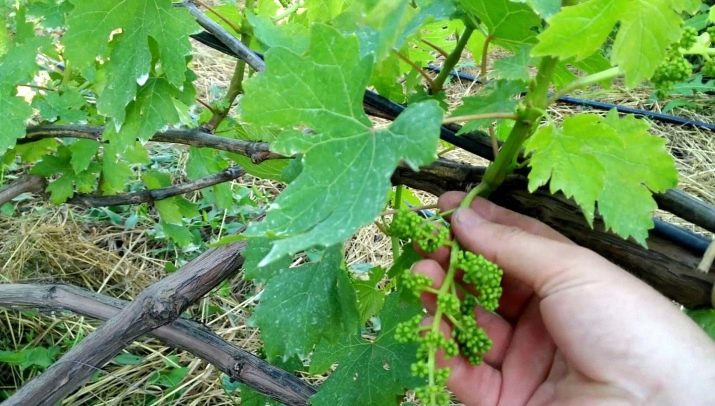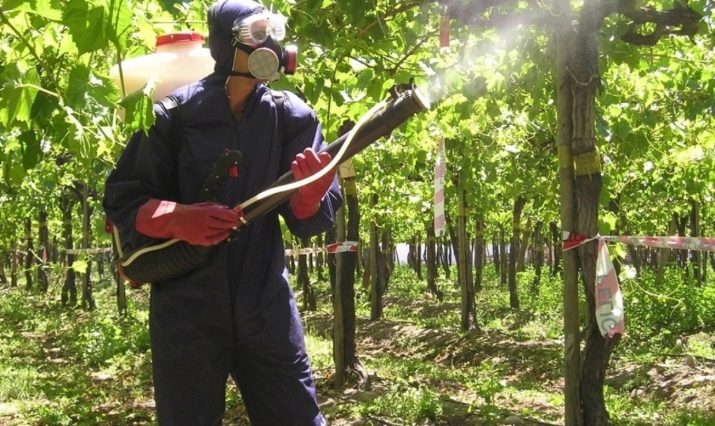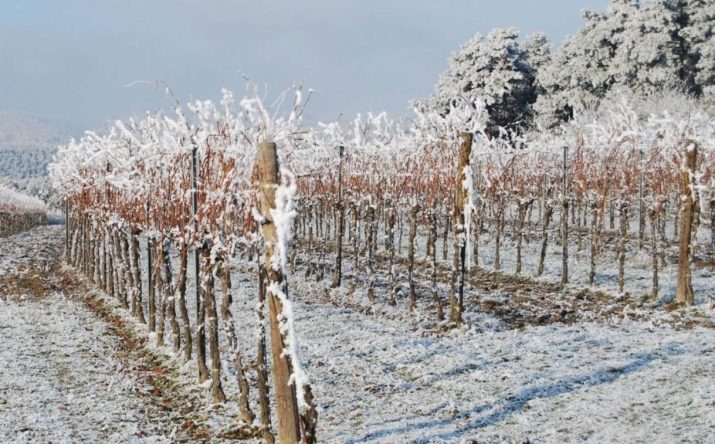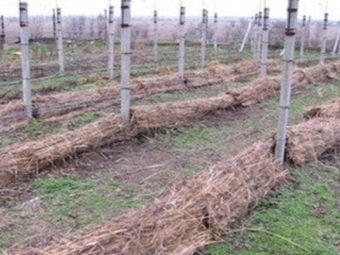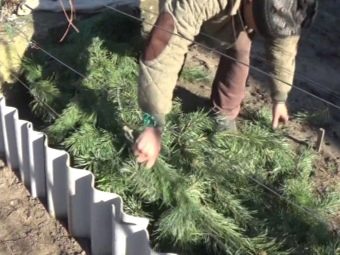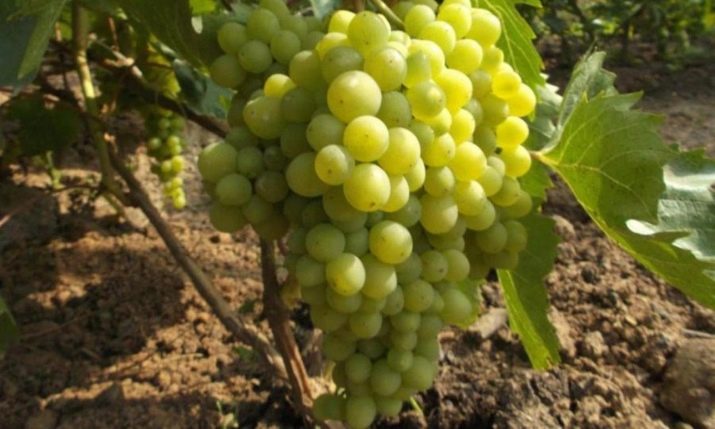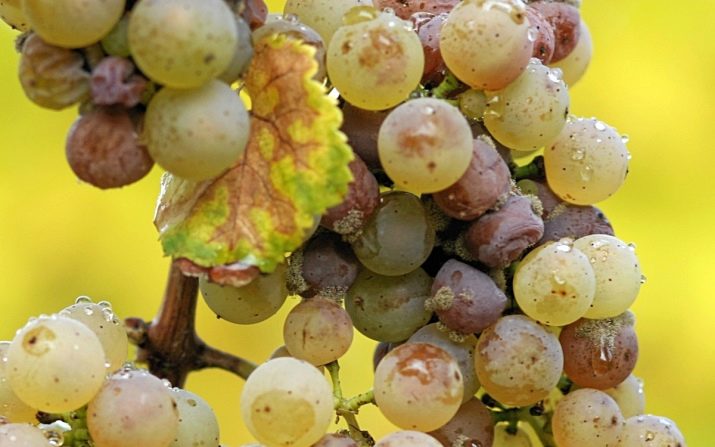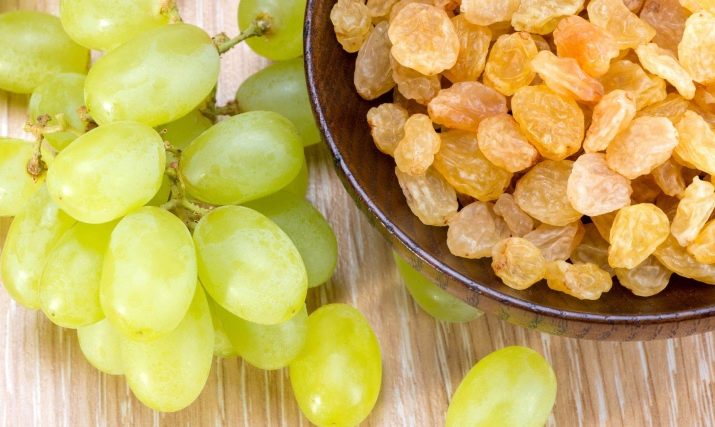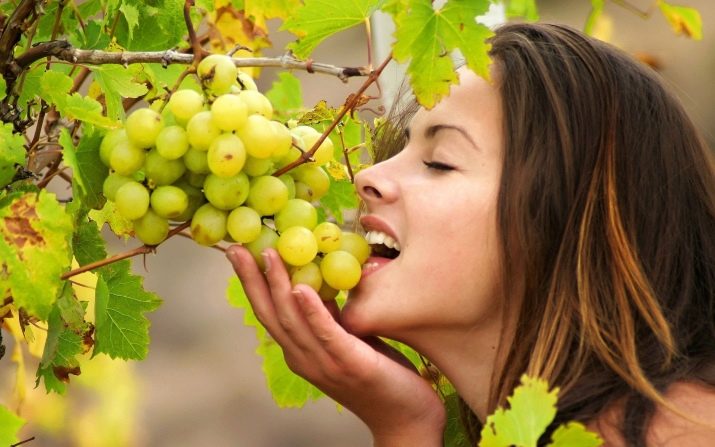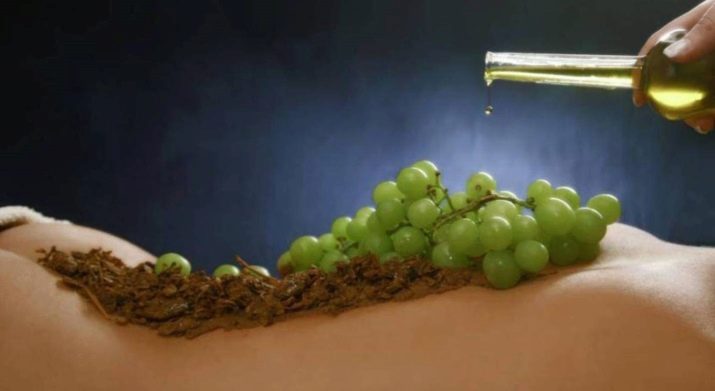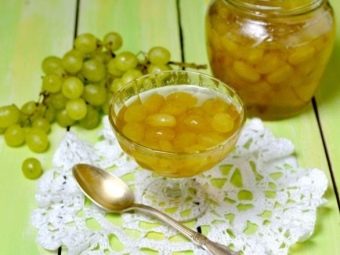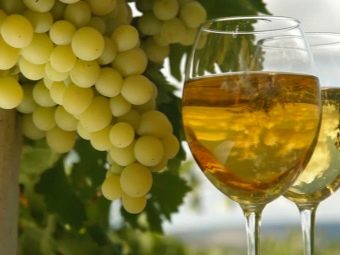Characteristic grape varieties "Rusbol"
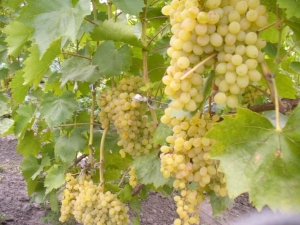
In the distant 1970s, the Soviet and Bulgarian breeders set out to bring a new hybrid of the solar berry. The task of scientists was to increase the yield, resistance to frost and reduce susceptibility to disease. For breeding, about 300 varieties were selected. This was how Rusbol was obtained (the second name is Kishmish Mirage), its parents are considered to be the superearly seedless and Villard blanc varieties.
Detailed description
The variety is table, the period of receipt of the crop is 115 - 125 days from the beginning of flowering. The short period of ripening and excellent frost tolerance (up to -25 ° C) allow the plant to be cultivated not only in the southern regions, but also much further north: in central Russia and even in Siberia.
It is noteworthy that even if the frost damages most of the shoot, the hybrid will remarkably recover at the expense of dormant buds and continue to yield.
The grapes "Rusbol" berries are yellow-white, small, weighing only 2 - 3 grams, with a thin skin. The taste is simple sweet, dense pulp. The sugar content of 19 - 21% with an average acid content of 6 g / l. Seeds are present, but soft, in a state of rudiments (rudiments). Due to this, the variety received another name: the Mirage raisin.
Kishmish can be called only conditionally, since the size of the rudiments is almost equal to the size of the developed seed (therefore, only class IV seedlessness is assigned). But, judging by the numerous reviews of experienced winegrowers, rudiments are not present in the berry every year and can vary in size.
But the grapes are massive, weighing 400 grams, the average weight is about 600 grams, and in favorable conditions the giants develop up to 1.5 kg.
With the development of too large inflorescence even recommended to pinch it a little. The formation of the brush does not hurt and will allow to get larger berries.
The flowers are bisexual, which means that they pollinate each other. They bloom profusely and continuously, with a pleasant smell, attracting a lot of insect pollinators, and can abundantly supply pollen to neighboring grape bushes of other varieties. The vine grows quickly and produces numerous shoots that are 85 - 95% fruitful, which even the beginner promises a high yield.
You will learn more about the characteristics of the Rusbol grape by watching the following video.
Cuttings
Shrubs multiply as grafting, and vaccinations - in both methods, experts note the excellent results of rooting.
In the case of vaccination, one must take into account: the stock must be short, the high one will break under the weight of numerous clusters. If there are no grapes at all, then grafting is the only way out.
To begin with, a place for planting is chosen: it is necessarily sunny, in the shade the plant will develop poorly. It should be borne in mind that the bush should be evenly lit from all sides. If the sun shines on one side only, the berries on the hand will ripen unevenly. The soil should ideally be light and fertile, but many note that this variety grows on any soil. If the soil is far from perfect, do not interfere with fertilize it with rotted manure, mixed with soil.
It is worth inspecting the root system of the cutting: if there are rotted and damaged roots, remove them. Sapling to improve survival can be processed by soaking in solutions of various growth stimulants, vitamins, hydrogen peroxide (tablespoon per liter of water).
Next, prepare the pit for planting: dig a width of 1 meter and a depth of about the same. Put crushed stone or broken brick on the bottom - this will be a drainage layer, then a mixture of soil, mineral fertilizers and humus. The distance between the pits is 2 meters, so that the grown bushes do not shade each other.
Pour a small hill from the ground on the fertile layer, next to insert a support for the plant. Put the stalk on this mound (leaning against the support), straighten the roots and cover with earth. Everything is good to tamp, not allowing voids, and pour one or two buckets of water.
Care features
Although the grade "Rusbol" and recognized unpretentious, care still needed. Everything is as usual - watering, feeding, pruning, spraying from pests and diseases and, if necessary, covering for the winter. None of these actions will require special knowledge.
Watering and feeding
During the first year after planting, watering the cuttings needs quite abundant. As for the periodicity - no recommendations, as appropriate. You can combine irrigation with the application of liquid fertilizers, in the period of active growth of the vine is good to apply foliar dressing. Compliance with these conditions will help the rapid rooting and successful acclimatization of hybrid seedlings. Top-dressings in large volumes do not produce during the first two or three years, since the pledged is enough when planted, the dose increases further. Adult plants are watered during the period of active growth and with a strong drying of the soil.
Pruning
The Rusbol grape has an important feature: the vine produces too many shoots, on which a large number of eyes (and almost all of them are fruitful). If you leave them all - the plant will at best give berries the size of beads. At worst, the bush will break with gravity and then die. In any case, the harvest can be forgotten.
Therefore, the timely removal of unnecessary processes is vital. The main work is carried out in the autumn - unnecessary branches are simply removed, while leaving about 30 eyes on the entire plant.
It is recommended to leave 6 - 8 eyes for one shoot, but even with only 2-3 pieces, the grapes will bear fruit.
In the spring, work on the formation of the bush resumes: when there are already 3 to 5 leaves on the branches, all the thickening shoots break out. As the vines develop, all the underdeveloped shoots are cut and with no flowers, the remaining shoots after this grow more actively and develop better. At the end of flowering from the plant remove all small brushes, leaving 1-2 pieces to escape.
In the summer and developing clusters undergo a small pruning, so a larger berry size is achieved on the hand. This is the most time-consuming and effortless procedure in all care, otherwise the hybrid "Rusbol" will not require too much attention.
Pest and disease protection
Common diseases of all grape varieties are oidium, mildew, various types of rot (white, gray, black), as well as bacterial diseases and viral damage to plants. Such damage can deprive the entire crop and lead to the death of plants. When growing the Rusbol variety, these disasters will not overtake even the one who first took up cultivation of this crop, since the variety is highly resistant to pests and diseases.
Spraying is carried out mainly for prevention. For this purpose, solutions of copper sulfate, hydrogen peroxide, Bordeaux mixture are used.
The only thing that can damage the bushes is rainy weather. It is noticed that from dampness the leaves of the vine turn yellow, and the berries can crack, and then rot.
Should I cover for the winter?
If "Rusbol" grows in the southern region, then we are not talking about shelter - on the eve of winter, the plant is not removed even from the trellis. In climates, harsher frost protection is needed, especially when there is little snow. If the height of the snow cover reaches 50 cm and more, additional materials for the shelter of the grapes are not needed, snow and so serves as a good protection for plants. However, the weather in winter lately has a very unpredictable character, so it is worth it to insure yourself.
Since the roots of the grapes can be damaged first by frost, they start from the shelter of the root system: the root zone is covered with a layer of humus about 10 cm high. Then the soil and the vines are treated with a solution of ferrous sulfate.
To cover the stems from frost, you can simply tilt them and sprinkle them with earth. There is another way: shoots wrapped with non-woven covering material, you need to bend down to the ground and covered with spruce branches.
We must remember that tightness is not necessary and even dangerous, air must flow through small holes in the shelter. Otherwise, you can get vypevshie eyes. In the spring of the onset of heat shelter is removed.
Hybrid forms
"Rusbol" acted as a parent variety when creating two more hybrids of grapes.
- "Rusball improved" (middle name - "Elf") appeared as a result of the merger of the base hybrid with the "Villard Blanc" and "Delight". Having the same characteristics as the parent variety, the newly obtained hybrid ripens even earlier - in 105–110 days, the berries are larger, begins to bear fruit the second year after planting. Only damp, cloudy weather can be an obstacle in obtaining high yields.
- "Rusbol muscat" - the result of combining varieties "Rusbol" and "Bulgaria sustainable". Oval-shaped berries, amber-yellow, have a valuable nutmeg aroma, the other indicators correspond to the parent form of the plant. Among the shortcomings, a decrease in resistance to the disease with oidium is noted, therefore, the corresponding processing of the hybrid is obligatory.
Advantages and disadvantages
The tasting scores are not so high compared to other raisins: fresh berries - just 7.6 points, dried grapes - 7.8 points. The disadvantages also include:
- low degree of transportability (because of what the variety is recommended for breeding in private farms);
- in rainy weather, the berries can crack, followed by the inevitable rotting;
- the need for constant pruning of excess shoots (rationing of the crop).
Numerous reviews of gardeners point out the following advantages:
- excellent stable yield even in central Russia;
- early ripening;
- high frost resistance;
- excellent self-healing ability after kidney freezing;
- undemanding of soil composition;
- flower brittleness, excellent help in pollination of neighboring plants of the female type;
- sweet berries to the taste of children, and rudiments during drying give a special flavor to raisins;
- wasps do not damage berries.
All these qualities of grapes "Rusbol" allow you to take up his cultivation, even for beginners in viticulture.
The unique properties of the plant
Grapes contain a lot of useful minerals and vitamins, which people have known about for thousands of years. In addition to eating, people used sunny berries as a medicine and various cosmetics.
Substances contained in the plant, lower cholesterol, strengthen the walls of blood vessels, improve heart function, protect against the formation of kidney stones, improve metabolism, and so on, do not list everything. Long since the use of grapes in food especially advised for a quick recuperation.
As a cosmetic, berries containing natural antioxidants are actively used both in home and in industrial cosmetology: both as a part of face masks, and for strengthening hair, and as an ingredient for spa procedures.
Due to the relatively low tasting assessments of the grape variety, it is recommended for fresh use and for drying. However, judging by the reviews of experienced housewives, the fruits of this variety can not only be eaten fresh and dried - the berries can be used for cooking:
- compotes, jelly and jam (in combination with lemon, melon, pear, orange peel, walnuts, etc.);
- wines blended with other grape varieties;
- vinegar;
- juice, you can with various additives.
A number of excellent characteristics inherent in this variety, makes it indispensable for all who take the first steps in viticulture and are afraid to be disappointed. The long-term practice of experienced gardeners shows that this variety will invariably rejoice with a good harvest, while not burdening it with great hassle to care for it.

